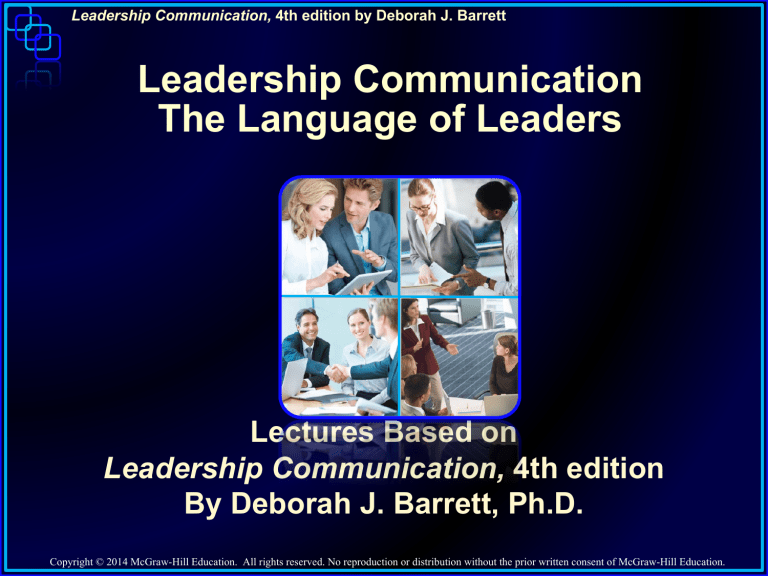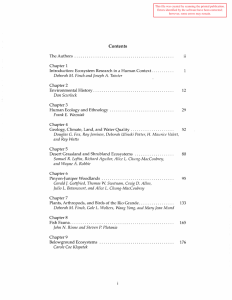
Leadership Communication, 4th edition by Deborah J. Barrett Leadership Communication The Language of Leaders Lectures Based on Leadership Communication, 4th edition By Deborah J. Barrett, Ph.D. Copyright © 2014 McGraw-Hill Education. All rights reserved. No reproduction or distribution without the prior written consent of McGraw-Hill Education. Leadership Communication, 4th edition by Deborah J. Barrett Discussion Topics q Finding Examples of Leadership Commmunication q Achieving a Positive Ethos: Tone and Style q Using the Language of Influence 3-2 Leadership Communication, 4th edition by Deborah J. Barrett Objective of this Chapter q Achieve a positive ethos through tone and style. q Influence others through concise, direct, and memorable prose. q Communicate clearly and concisely. q Follow the language rules that matter. q Edit and proofread your own work more effectively. 3-3 Leadership Communication, 4th edition by Deborah J. Barrett Finding Examples of Leadership Communication q David McCullough, who has written extensively on the lives of U.S. presidents, says the following about the language of presidents: 3-4 Leadership Communication, 4th edition by Deborah J. Barrett Nelson Mandela’s autobiography: 3-5 Leadership Communication, 4th edition by Deborah J. Barrett Readers would be inspired by his humility, optimism, and hope. His tone is sincere and heartfelt, such as, just as the tone of His Holiness the fourteenth Dalai Lama in his Nobel Peace Prize Acceptance Speech (Oslo on October 5, 1989): 3-6 Leadership Communication, 4th edition by Deborah J. Barrett Analyzing Your Audience: Basic Questions 2-7 Leadership Communication, 4th edition by Deborah J. Barrett Achieving a Positive Ethos through Tone and Style To project a confident tone when we speak and when we write, we need to possess confidence not only in our knowledge on the subject but also in our ability to capture the content in the right words used in the right way. We want to sound confident and speak with authority. We want to sound approachable and open to conversation. The words we select and how we decide to combine them in sentences create our style. Our audience perceives that style as our tone which they make assumptions about our ethos and our objectives. The tone, influences the success of our message and inspires others to believe in us. For transformational leaders, it is crucial to know how best to use language for positive impact and to avoid a style that creates any negative responses in their audiences. 3-8 Leadership Communication, 4th edition by Deborah J. Barrett What kind of ethos the writer is projecting? 3-9 Leadership Communication, 4th edition by Deborah J. Barrett First, note the subject line. Yes, “layoff” is direct, but it is also cold and uncaring. Second, the e-mail begins with the harsh statement that John’s job has been “abolished” and then ends with an attempt to soften the brutal effect by thanking John for his “efforts.” The thank-you seems insincere and even out of place in this otherwise cold, bad-news note. Third, note the use of passive voice, which contributes to the distancing, uncaring tone: “will be abolished,” “will be authorized,” and “have been most appreciated.” These distance Mr. Cole from his audience and from the actions. Forth, that this message was sent in an e-mail makes the tone seem even more uncaring. 3-10 Leadership Communication, 4th edition by Deborah J. Barrett Comparing to this


